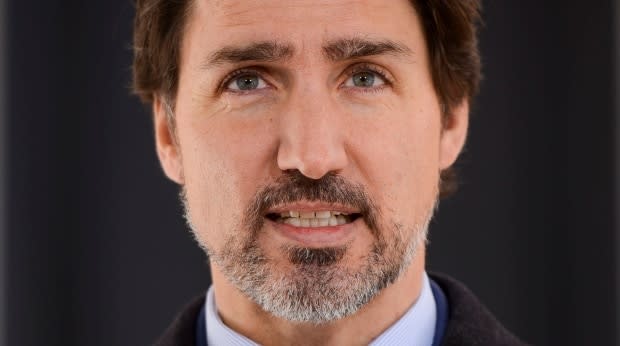Calls mount for Ottawa to release projections on COVID-19 spread

Prime Minister Justin Trudeau has said the country may have to endure the COVID-19 pandemic for months to come, but his government has so far refused to release internal projections of just how deadly the virus could be and when the caseload might peak.
Other countries, including the U.S., have offered models stating how many people they predict will be hospitalized and how many will die from a pandemic that has already claimed the lives of more than 130 Canadians while infecting thousands more.
Trudeau said Thursday the federal government isn't ready to release that sort of data at this time.
Ontario Premier Doug Ford promised Thursday that his government will release modelling tomorrow of potential death rates. "It's going to be stark," he said, adding it will be a "sobering discussion."
"It will be a real wake-up call. I don't believe in holding back figures in this crisis. We have to be fully transparent with the people of Ontario, no matter how hard it is."
He said he hopes the grim figures will convince people who have been defying stay-home requests — or flouting pleas to practice physical distancing — to take pandemic planning more seriously.
'Volume of deaths'
To date, most provincial governments have publicly released only daily, rolling updates on the number of cases and the current death toll, with little analysis of how COVID-19 might play out in the months ahead.
When pressed Thursday on why his government won't release internal data on COVID-19's potential spread, Trudeau said there is still more work to be done to provide Canadians with an accurate picture.
Watch: Trudeau says more pandemic data will be released soon:
"I'll be speaking tonight with the premiers about this data, about the modelling and analysis that's going on and we look forward to being able to share more information soon," Trudeau said, referring to a scheduled call with the country's first ministers.
While he promised to share more information in the "coming days," Trudeau also downplayed the usefulness of projections that offer a "range of scenarios."
He said some models suggest "everyone gets suddenly better within the next few weeks," while others suggest Canada could be facing an Italy-like situation with many more deaths and severe hospital constraints.
"There is a range out there, and just highlighting that range is not as useful or important as being able to get clearer numbers and clearer and clearer analysis of what we are likely to face," Trudeau said.

Health Minister Patty Hajdu said Canada will have a better handle on the projected "volume of deaths" once the provinces supply clear infection rate data.
Some provinces have been laggards in testing so it's hard to pinpoint the current infection rate.
Ontario, for example, had a backlog in testing of nearly 11,000 cases last week before it started to whittle it down as more labs came online. There are 2,100 cases currently under investigation in the country's populous province.
It's hard to project what will happen next without knowing what has happened already, Dr. Theresa Tam, the federal chief public health officer, told reporters Thursday.
"What we're doing with the provinces is take the data we have now, the number of positive and confirmed cases, and track where we're headed," she said. "It's still very early days."
Watch: Federal government under pressure to release COVID-19 projections:
Premier Ford said the province is ready to share with the public its models and "walk through Ontario's story."
"Over the next little while we will all have to make some very, very difficult decisions and you deserve the same information that I have," Ford said. "You deserve to see the data I see when making decisions."
Ford suggested the modelling will inform the province's next steps during this "extremely, extremely serious situation."
"We won't hesitate to take every step necessary to slow the spread of COVID-19," he said, adding more needs to be done to address the spread in long-term care homes, where there has been a tragic number of fatalities.
The models that have been circulated in other countries are inherently imprecise, given the fast-changing and unpredictable nature of COVID-19. But they have informed policy makers on how best to combat the virus.
200,000 people face death in the U.S.: model
U.S. President Donald Trump and his top health officials released sobering charts Monday that suggest 200,000 people will die in that country even if strict physical distancing measures are followed — with many more potential fatalities if some states allow social and economic life to continue unabated.

In that context, Trump vowed to continue a partial nationwide shutdown until the end of April 30. The data prompted Florida Governor Ron DeSantis, a Trump ally, to finally issue a stay-at-home order Tuesday. The caseload in that state has jumped sharply in recent days.
The United Kingdom quickly changed course on its national COVID-19 plan after an Imperial College of London model suggested that, without drastic interventions, as many as half a million people would die from the virus in that country.
New Zealand's health ministry has research conducted by the University of Otago that estimates up to 64 per cent of the population of that small island nation will be sickened by the virus. The study estimates that 14,400 people, or 0.29 per cent of the population, could die of COVID-19.
New Zealand is currently under a four-week lockdown.


